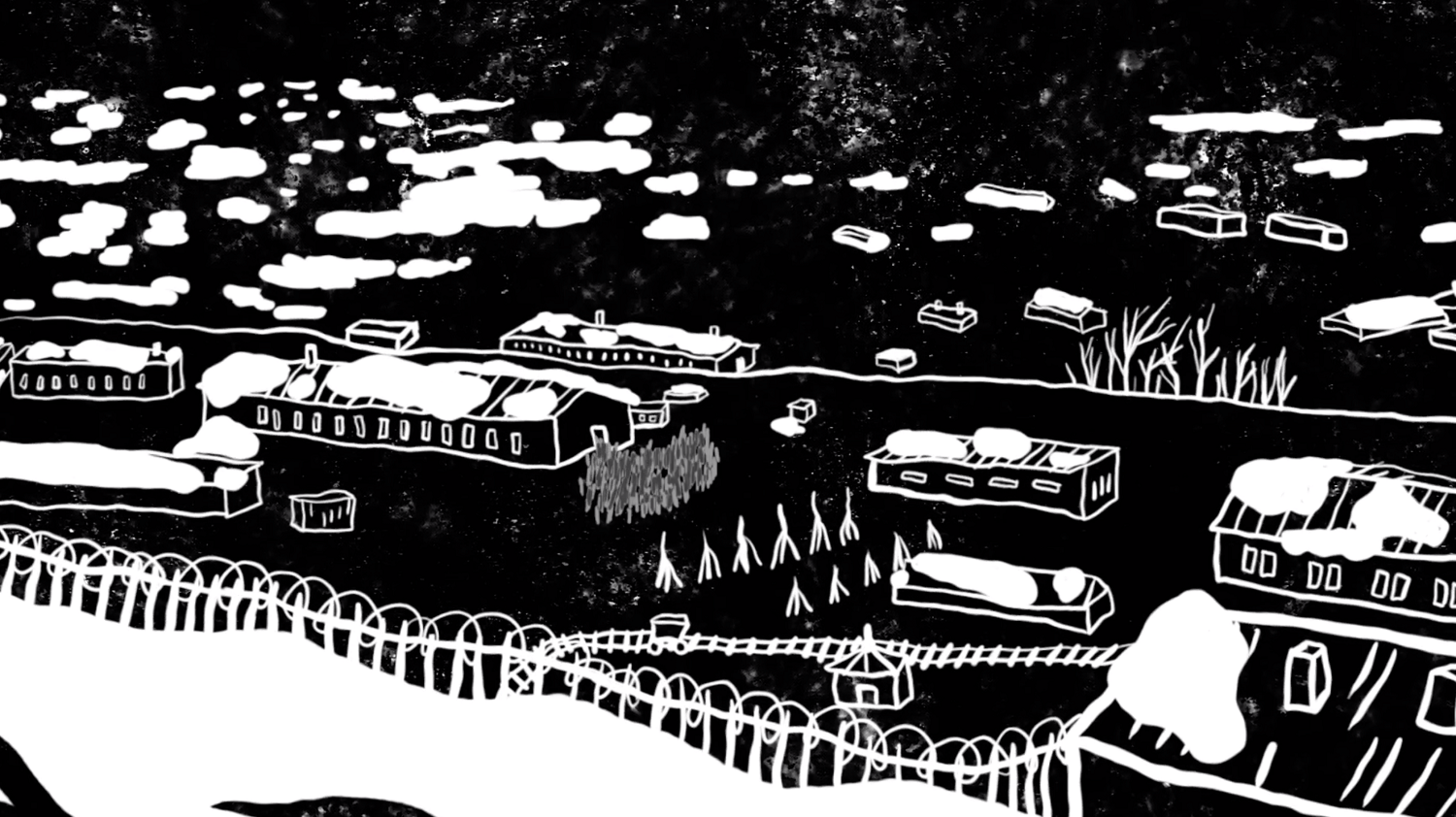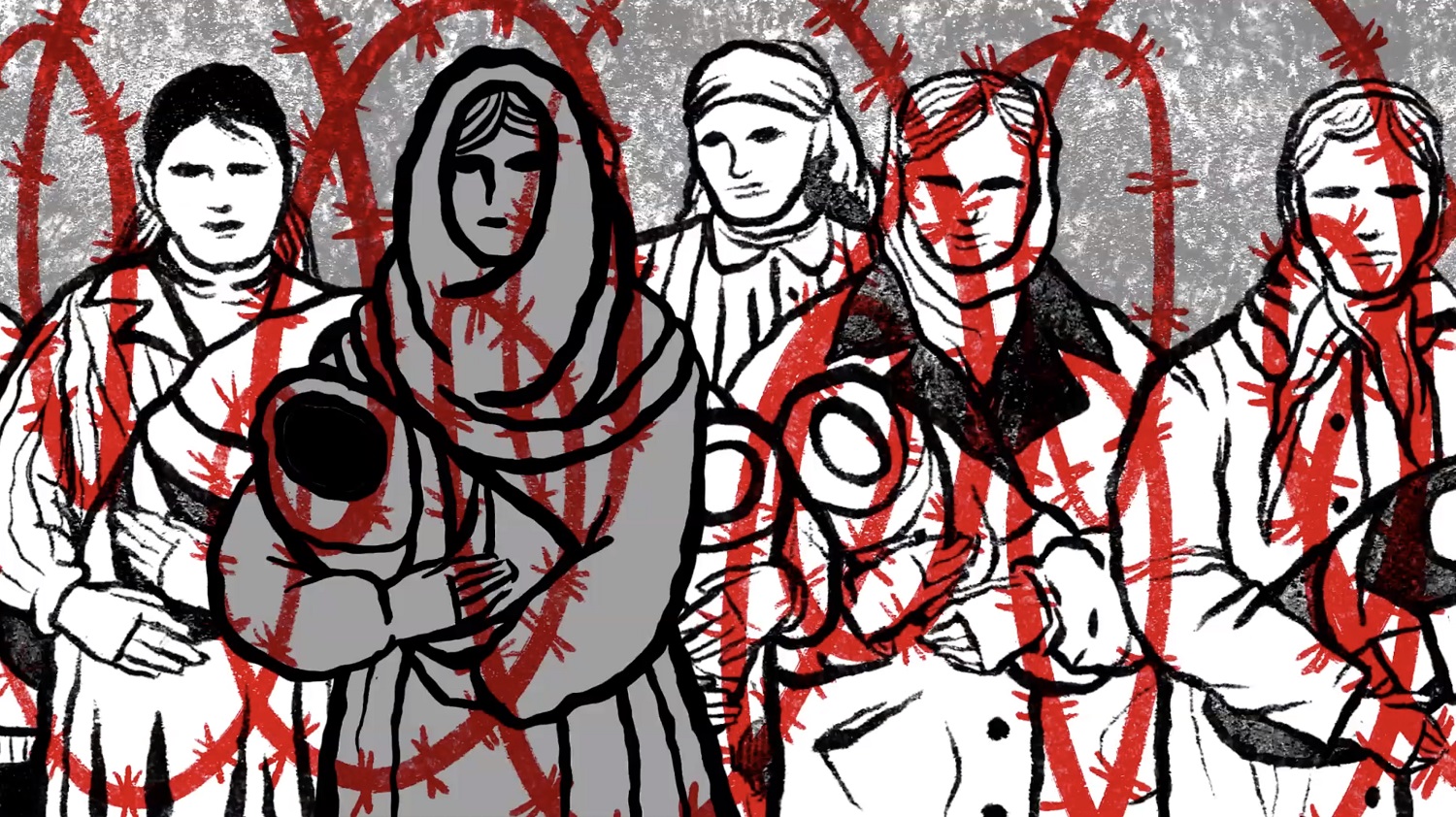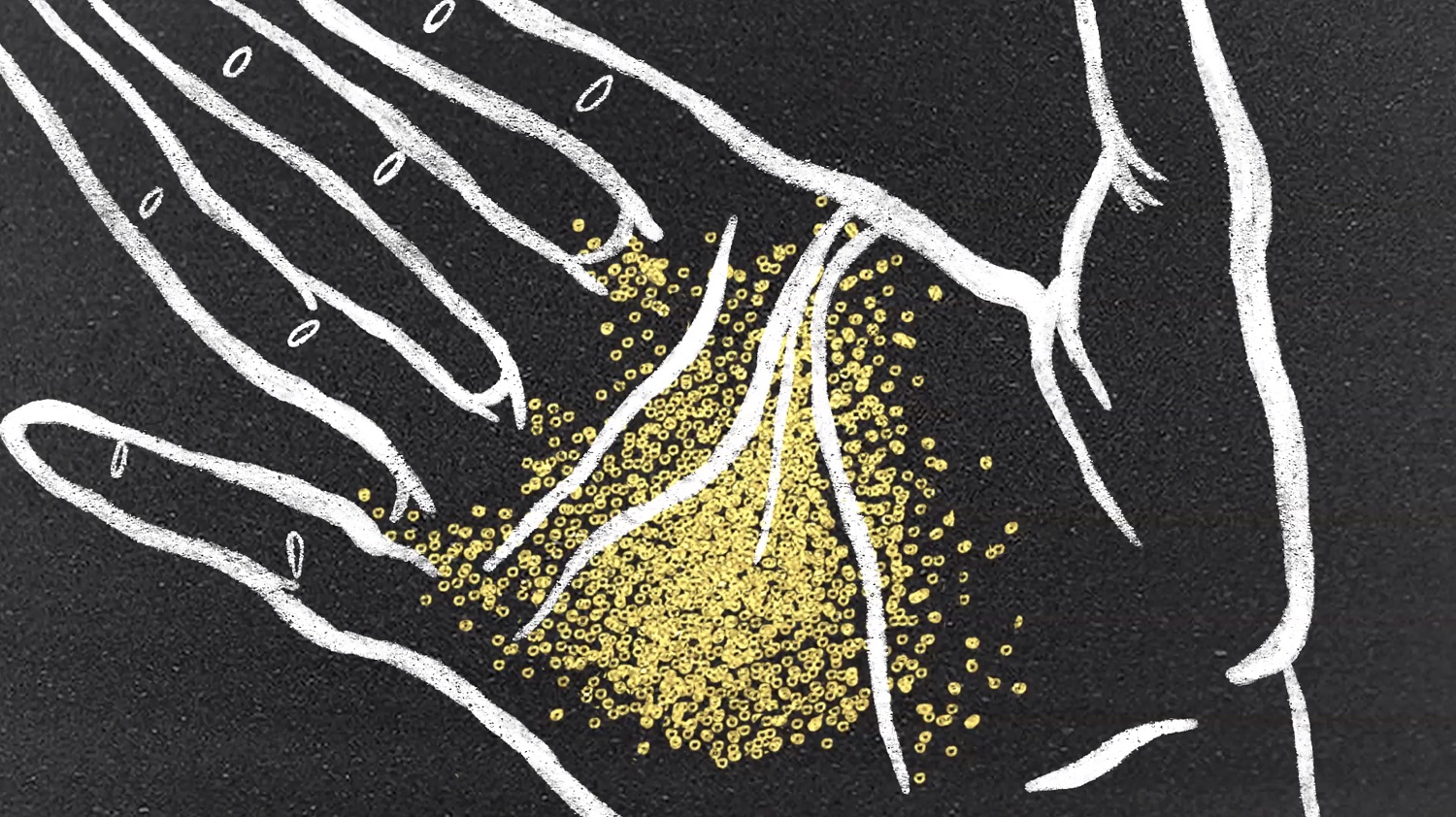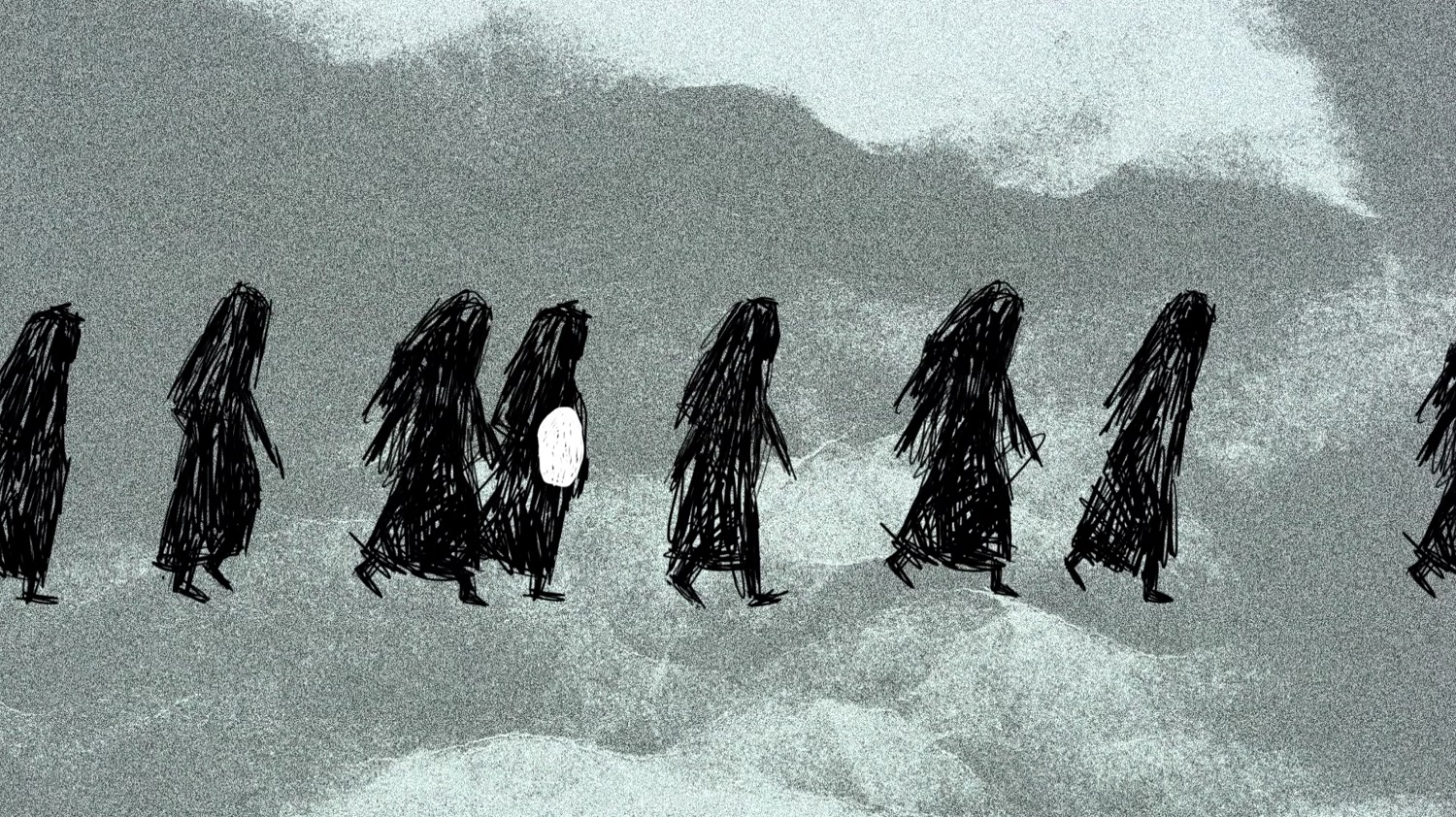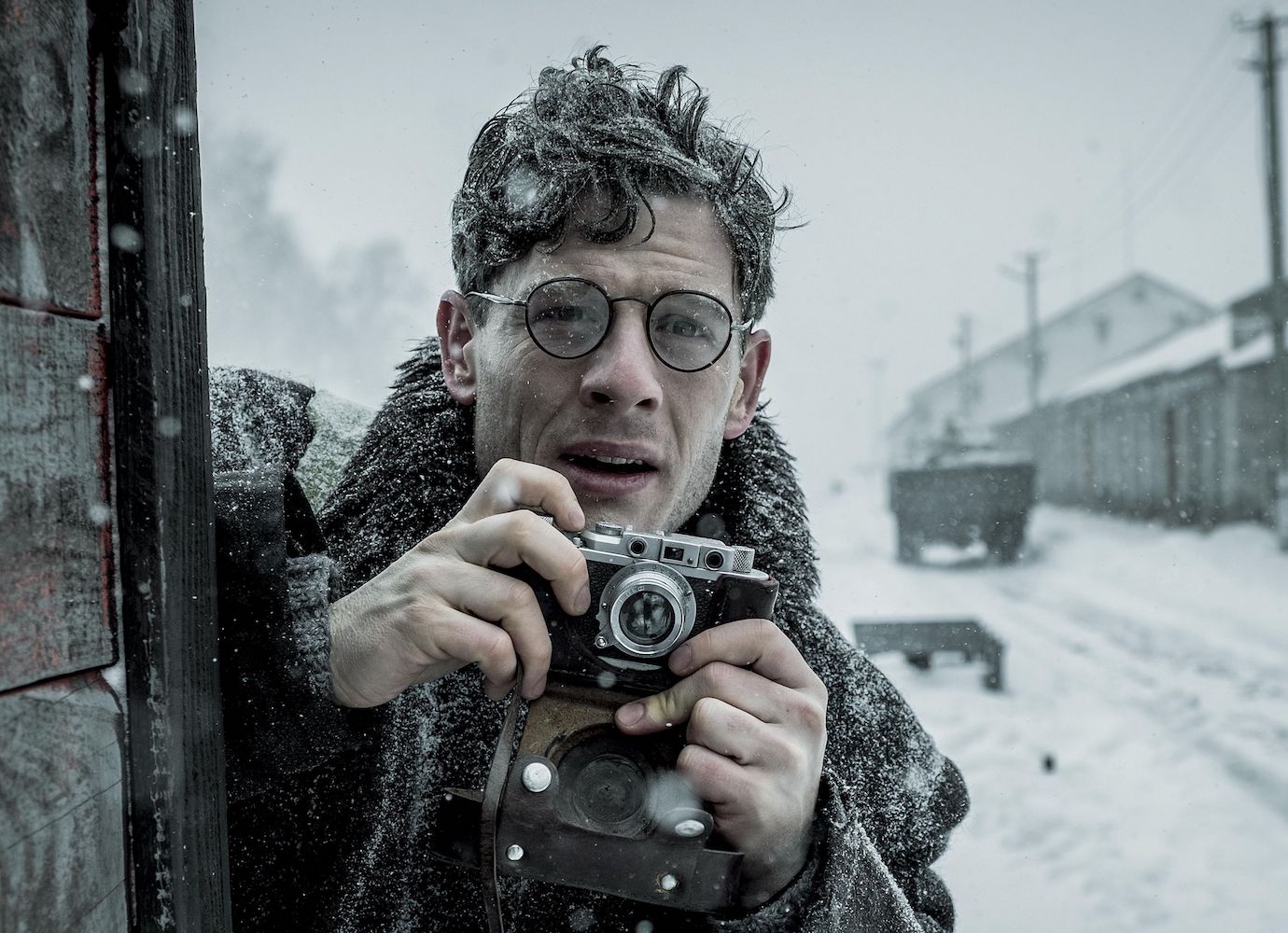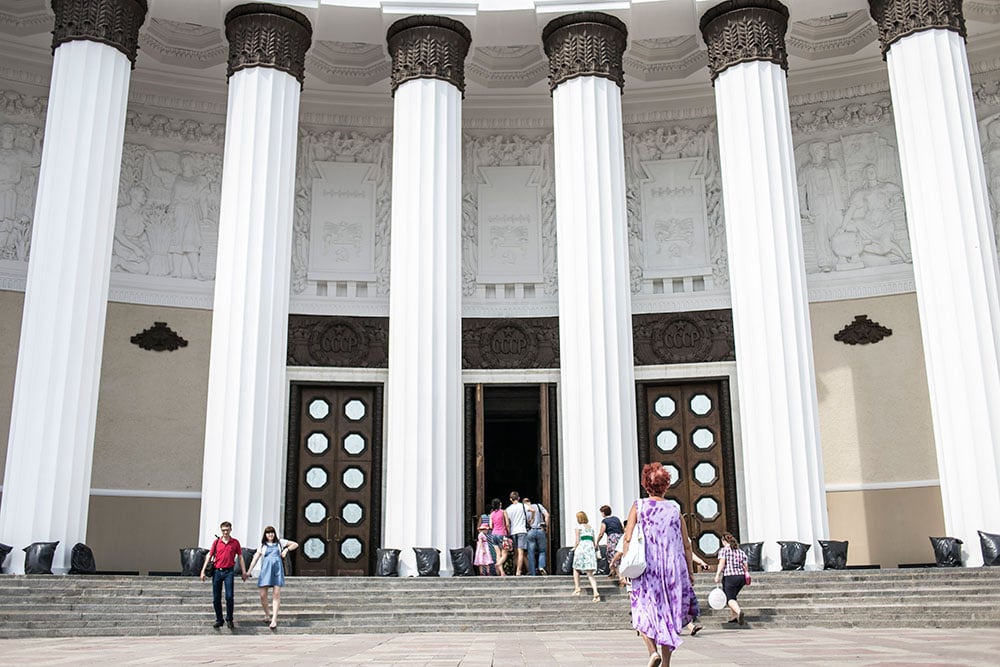‘This is not ancient history’: meet the artists bringing the devastating stories of Stalin’s repressions to life
How do you tell a story that was never supposed to be told? The Calvert Journal talked to the artists capturing the scale and emotion of the Soviet Union’s notorious repressions for the new journalistic project, Generation Gulag, from Coda Story.
Soviet writer and dissident Aleksandr Solzhenitsyn named Solovki Prison Camp “the mother of the Gulag”. Hidden in the heart of Russia’s White Sea, it was a natural choice for officials planning the Soviet Union’s first wave of centralised prison camps: fresh labour was needed at the nearby White Sea canal, and the islands’ remote location meant little chance for prisoners to escape. The stories that emanated from between its walls — like millions of others in isolated camps that dotted the country’s vast expanses — were never supposed to be heard.
It’s a narrative of silence that news platform Coda Story wants to change. Its new series, Generation Gulag, hopes to tell the story of the Soviet forced labour system, not just through facts and figures, but by giving survivors a voice, often for the first time.
“The survivors are now quite old, but they do still exist,” says Thomas Burns, Coda Story’s creative director. “Some were afraid to speak. But we wanted this to feel like an oral history project. Textbooks don’t do justice to something of this scale. People think it was only a handful of people who were sent to the gulags. It wasn’t. It sent shock waves through society — the survivors who came back as different people, the families who had to pick up the pieces. It had waves of effects and we’re still feeling them. This is not ancient history.”
Some 14 million people passed through the gulag system during its peak between 1929 to 1953, though similar camps existed as early as 1918 and as late as the 1980s. The prisons and the labour they provided were a catalyst for the large-scale infrastructure projects that would appear in the early Soviet period, catapulting railways and roads across the frozen tundra.
“People think it was only a handful of people who were sent to the gulags. It wasn’t. It sent shock waves through society”
These mighty Soviet achievements exacted a very real human cost. An estimated 1.6 million prisoners died in the prison camps, although those on the brink of death were often discharged before they met their end, making it difficult to ascertain an accurate figure of how many lives the gulag system ultimately claimed.
Yet despite the gulags’ notoriety for suffering, today’s Russian government seems reluctant to deal with their legacy. The state’s refusal to include real insights into the gulag system in the school curriculum or lead any form of formal remembrance means that more and more Russians either significantly underestimate the gulags’ impact, or simply do not know about their existence at all. This lack of recognition of Stalin’s repressions has led many to accuse the Kremlin of whitewashing a painful chapter of Soviet history into non-existence. It is this willingness to rewrite the past that prompted Coda Story, as well other Russian human rights’ groups, into action.
“There wasn’t a clean break in Russia between the modern country today and the Soviet Union, so many people look back with these rose-tinted glasses,” says Burns. “The current Russian government wants to preserve some of that Soviet nostalgia. Ultimately, it takes strong leadership and a lot of humility to say, ‘stop, we need to talk [about this part of our history].’ It’s easier to make it quietly go away.”
Faced with a lack of documentary footage or images, Coda Story turned to Russian and Georgian illustrators and animators in a bid to bring each interview to life. It’s this creativity that transforms historical recounts into emotional experiences, says Burns. “We didn’t want to just give out information, but a lasting idea about what it was like to be there.”
But how do you begin to tell a story that was never supposed to be told? The Calvert Journal talked to the artists behind the project to discuss the power of pictures, confronting history, and how to visualise the sheer scale and emotion of one of the 20th century’s most devastating repressions.
Natalia Yamshchikova
Illustrator, St. Petersburg
“Frankly, we didn’t learn a lot about the gulags at school. I read books, but I don’t remember doing anything special about it in history lessons. It always felt like something from the past. Now that I’m older, and I’ve realised that these horrible things can happen again — that they still do happen — that’s when I’ve started to feel like I need to know more about these things.
I illustrated two videos. The Officer’s Daughter, a video about Olga Shirokaya, uses bright colours. In many ways, it’s harsher on the viewer: the colour, the style. I love this conflict between the bright, joyful colours and the terrible events that are described. I was also inspired by Olga herself. In her interview, she wears a red and blue skirt. I wanted to use those colours too.
There were very few witnesses to what happened in the gulags. These weren’t like the German concentration camps, with their endless paperwork and bureaucracy. No one wants to talk about the camps now either, which means we have a lot of empty spaces. We fill those spaces with our art. It is Important to hear from the people who were there, from their firsthand experiences. So many people died; it’s overwhelming. But when you hear these stories from a single person, then you really feel it.”
Polina Tsupilo
Illustrator/Animator, Moscow
“When I was working on my piece, I did a lot of research on archive photos. I chose black and white because this isn’t a fun story. It’s just intense, dramatic.
It’s hard to imagine these stories because they’re so different from our lives today. Even when I read or watch documentaries about the camps, I know that I will never really understand or feel how these people felt. And honestly, I don’t want viewers to feel that same pain, but I want them to understand and to educate themselves. Illustration helps people to picture these things in their head. It’s all about connecting people: the viewers and those who came forward to tell their stories. These people aren’t famous, but each story is their own.
Illustration can’t describe everything. Text is better when it comes to conveying large chunks of information, for example. But images help you to remember, and that is what we need to do.”
Sofiya Voznaya
Illustrator/Animator, Moscow
“The gulag system is part of my family history. My great-grandfather was arrested [during the repressions]: he didn’t spend time in the labour camps, but only because he was killed during interrogation. The family was told it was a heart attack, but we never knew what truly happened. My family is Russian, but they moved to Kazakhstan to try and avoid the Soviet authorities. They still live there today.
We have interview and archive footage to illustrate these stories, but it’s not enough. It’s the animation that really evokes those feelings from the viewer. The sound does, too. We talked for a long time about how to capture the sound of soldiers shouting, just like how we worked on how to represent feelings visually, like how to show the sense of relief from something like opening a small window in a dark and crowded railway carriage. We also worked on presenting the stories in a way that was dynamic and changing, because they need to catch the attention of younger generations. We’ve just moved to Moscow — my daughter is 5 years old — and we’ve already talked with her a little about the gulags. She’s seen the plaques in memory of the people who were arrested [placed on buildings by human rights charity Memorial as part of their project Last Address], and has asked about them. We explained what we could, in a way that was appropriate. Our animations do the same job. It’s important for children to know about their past. They need to know, so that they can avoid the same mistakes.”
Maria Vlasenko
Illustrator, Moscow
“There were some difficult moments when illustrating these stories. There’s a moment in one of the interviews where they describe snipers shooting into a crowd and how people begin to fall. I didn’t know how to show that. I became emotional. And you can’t be emotional when you’re working, because you need to think about what you’re doing, about the composition of your work.
I was also a little worried about how the survivor whose interview I was illustrating would feel about my work. Creating an animation isn’t the same as making a portrait, so it’s not an exact likeness. But I didn’t want them to feel it was too cartoonish — I didn’t want them to feel as if this wasn’t their story.
But ultimately, my work is there to help the journalists and to highlight their words. Animation is a great way to get people’s attention for a difficult story.”
Gogi Kamushadze
Illustrator/Animator, Tbilisi
“For me, the stylistic decisions behind my work all came from the interview itself. The stories of these gulag survivors were the biggest inspiration for how we rendered the project visually. Details about each character, the time frame their stories were set in, and the arc of their narrative is what drove our stylistic approach.
In the digital age we live in, we have more tools than ever before to create an emotional experience for viewers. Facts and dates are important, of course, but the feeling behind each story is also important. Animating and illustrating these stories gives a freedom and flexibility to the storytellers to convey these narratives in a more appealing and more immediate way.
The project was very eye-opening for me. The gulag was definitely not part of what we learned in school as a child. I didn’t know much other than what’s known publicly and a few stories from the Georgian village where my relatives are from. [But] the people who suffered and were murdered in the gulag were real people. They had lives that were ruined because of Soviet repression, and I think this series serves a vital function of connecting today’s public with people who experienced gulag first hand.”
